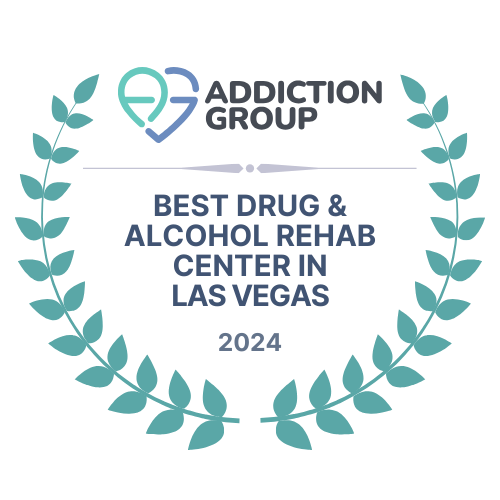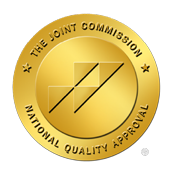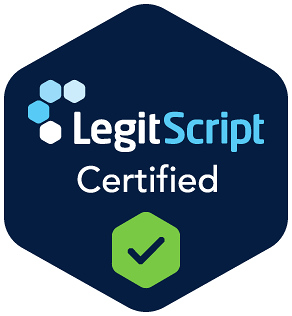Introduction to Synthetic Drugs
Synthetic drugs pose significant risks to users, especially synthetic cannabinoids and bath salts. Understanding these dangers is essential for you or a loved one seeking help.
Risks of Synthetic Cannabinoids
Synthetic cannabinoids, commonly known as K2 or Spice, are chemically modified herbal substances designed to mimic THC, the active compound in marijuana. However, the effects of these synthetic versions can be drastically different and more perilous. According to a 2020 study published in J Forensic Sci, there were forty-three fatalities linked to the synthetic cannabinoid 5-Fluoro-ADB, underscoring the severe risks associated with these drugs (WebMD).
The health risks of synthetic cannabinoids include:
- Cardiac Arrest
- Acquired Prolonged QTc Interval: This condition can lead to serious heart issues. (WebMD)
- Unpredictable Effects: Due to the variability in potency and the ingredients used, the effects can be life-threatening and vary widely from batch to batch. Users may also unknowingly mix synthetic marijuana with other drugs, complicating the risks even further (Gateway Foundation).
Synthetic cannabinoids are classified as Schedule I substances under the Controlled Substances Act, meaning they are deemed to have no accepted medical use and are more likely to pose a risk for addiction.
Dangers of Bath Salts
Bath salts are another category of synthetic drugs posing significant dangers. These substances, often marketed as “bath salts,” are not actual bathing products but rather a mix of various synthetic stimulants. The use of bath salts can lead to severe psychological and physical health issues. Users may experience symptoms such as:
- Agitation and Paranoia
- Hallucinations
- Increased Heart Rate
- Severe Anxiety and Panic Attacks
Due to their unpredictable nature, bath salts can lead to dangerous behaviors and medical emergencies. Users have reported feeling invulnerable, leading to risky actions that could result in harm to themselves or others.
If you or a loved one is struggling with addiction to synthetic drugs, including K2, Spice, or bath salts, there are treatment options available such as synthetic drug addiction treatment which can provide the necessary support to overcome these challenges. Seeking help is crucial for recovery and maintaining a healthy, fulfilling life.
Understanding K2 and Spice Addiction
Chemical Composition
K2 and Spice are synthetic forms of marijuana designed to mimic the effects of delta-9-tetrahydrocannabinol (THC), the primary psychoactive compound in natural cannabis. These substances are chemically modified herbal products that contain a variety of synthetic cannabinoids. According to Gateway Foundation, they are classified as Schedule I substances under the Controlled Substances Act. This classification includes 43 specific synthetic cannabinoids, which are not regulated by the FDA.
The chemical composition of K2 and Spice can vary significantly, making them unpredictable in potency and effects. Unlike natural marijuana, which has a more stable chemical profile, synthetic cannabinoids are often altered to enhance their effects and evade legal restrictions. This variability can lead to dangerous and sometimes life-threatening reactions, as individuals using these substances cannot be assured of their composition (Discover Health Group).
Comparison to Natural Marijuana
When comparing K2 and Spice to natural marijuana, it is critical to understand that while synthetic forms are engineered to replicate the effects of THC, they can often be much more potent. This enhanced potency can increase the risk of adverse effects, including withdrawal symptoms, overdose, and even death. Some research indicates that individuals may face greater challenges in terms of addiction due to the unpredictable nature of these synthetic substances (Gateway Foundation).
The following table highlights key differences between synthetic and natural marijuana:
| Aspect | K2/Spice (Synthetic Marijuana) | Natural Marijuana |
|---|---|---|
| Composition | Chemically modified; varied synthetic cannabinoids | Delta-9-THC; stable chemical profile |
| Potency | Often more potent; effects can be unpredictable | Generally consistent potency and effects |
| Legal Status | Classified as Schedule I; not FDA regulated | Legal status varies by region |
| Risk of Addiction | Higher due to variable composition | Moderate; while addiction is possible, consistent experience with cannabis can reduce it |
| Effects | Can cause severe anxiety, paranoia, and hallucinations | Generally milder effects, though can include anxiety in high doses |
From January 2016 to September 2019, there were over 21,714 emergency department visits related to suspected synthetic cannabinoid exposures in the U.S. This indicates a considerable public health concern surrounding K2 and Spice use (Discover Health Group).
Understanding these differences is crucial for individuals and their families when seeking spice and K2 addiction treatment and making informed decisions about recovery options.
Health Effects of Synthetic Marijuana
Impact on Physical Health
Synthetic marijuana, commonly known as K2 or Spice, poses significant risks to your physical health. These substances are designed to mimic the effects of natural marijuana, but they can be much more potent and dangerous. In fact, synthetic cannabinoids can be up to 100 times more powerful than their natural counterpart, increasing the likelihood of experiencing adverse effects (American Addiction Centers).
| Physical Health Effects | Description |
|---|---|
| Heart Rate Changes | Synthetic marijuana can cause increased heart rate and heightened blood pressure, leading to cardiovascular issues. |
| Respiratory Problems | Smoking synthetic cannabinoids can lead to lung irritation and potentially serious respiratory issues. |
| Gastrointestinal Disturbances | Users may experience nausea, vomiting, and abdominal pain as direct effects of consumption. |
| Neurological Impacts | Synthetic marijuana can lead to seizures and other neurological symptoms due to its unpredictable chemical composition. |
Withdrawal symptoms may also arise upon stopping use, including irritability, headaches, depression, and anxiety. Medical supervision is strongly recommended during withdrawal due to potential instability and health complications.
Psychological Effects
The psychological impact of synthetic marijuana use can be severe, often leading to dangerous behavior and mental health issues. While these substances are designed to provide a high similar to natural marijuana, their effects can include anxiety, paranoia, hallucinations, and cognitive impairment. Some individuals may also become dependent on these substances, leading to ongoing substance use problems (Gateway Foundation).
| Psychological Effects | Description |
|---|---|
| Anxiety and Paranoia | Many users report increased anxiety and feelings of paranoia which can persist after use has stopped. |
| Cognitive Impairment | Users can experience memory issues, difficulty concentrating, and challenges in decision-making. |
| Mood Swings | Synthetic cannabinoids may cause rapid changes in mood, contributing to emotional instability. |
| Risk of Psychosis | Higher potency can result in severe psychological effects, including episodes of psychosis in vulnerable individuals. |
It is essential for you or your loved ones to seek synthetic drug addiction treatment that addresses both the physical and psychological facets of addiction. Effective treatment can help mitigate these health risks and support recovery. Resources for mental health services, including addiction counseling and dual diagnosis treatment, are crucial for those affected.
Treatment Options for K2 and Spice Addiction
Addressing K2 and Spice addiction requires a comprehensive approach to ensure effective recovery. Treatment options often include detoxification and medication-assisted therapy, both essential in overcoming the challenges posed by synthetic cannabinoid dependence.
Detoxification Process
The detoxification process is crucial for individuals recovering from K2 or Spice addiction. Due to the potency of synthetic cannabinoids, withdrawal symptoms can be severe, encompassing irritability, headaches, depression, and anxiety (American Addiction Centers). Medical supervision is highly recommended during detox, as the withdrawal process can be physically and psychologically demanding.
During detox, individuals will receive supportive care to manage discomfort and ensure safety. A treatment program typically follows these steps:
| Step | Description |
|---|---|
| Assessment | A thorough evaluation to identify the extent of addiction and medical history. |
| 24/7 Monitoring | Continuous observation from healthcare professionals to manage withdrawal symptoms. |
| Symptom Management | Administration of medications or therapies to alleviate discomfort. |
| Transition to Rehab | Development of a plan to enter a rehabilitation program for further support. |
Choosing a facility that specializes in addiction treatment can provide a safer and more effective detoxification experience.
Medication-Assisted Therapy
Medication-assisted therapy (MAT) offers a significant advantage in treating spice and K2 addiction. This approach combines behavioral therapy with medications that support recovery and help manage withdrawal symptoms. Although specific medications for synthetic cannabinoid addiction may vary, some common therapies target anxiety, depression, and other mental health issues often accompanying substance use.
MAT may incorporate medications to help restore chemical balance in the brain, reducing cravings and the likelihood of relapse. Individuals may also engage in cognitive-behavioral therapy to develop coping strategies and address underlying psychological challenges.
Engaging in MAT not only improves the chances of a successful recovery but also assists in transitioning to long-term support options. For further treatment options, explore synthetic drug addiction treatment and how facilities like Vegas Stronger can aid in the process, focusing on holistic well-being and recovery.
Regulation and Prevention Efforts
Classification of Synthetic Drugs
Synthetic drugs such as K2 and Spice are classified as Schedule I substances under the Controlled Substances Act. This classification implies that they have a high potential for abuse and no accepted medical use. According to Discover Health Group, a total of 43 specific synthetic cannabinoids are listed as Schedule I. These substances are not regulated by the FDA, which has contributed to significant variability in their potency and safety.
In 2011, five common components of K2 were officially classified as Schedule I drugs by the DEA, marking a crucial step in regulating these substances. Since then, authorities at various levels—state, city, and federal—have been actively working to tighten regulations on the sale of synthetic cannabinoids. For instance, some locations, such as New York City, have taken measures to ban the use or sale of any variant of these drugs, aiming to deter manufacturers and distributors from operating in those areas American Addiction Centers.
| Classification | Year Implemented | Schedule | Notes |
|---|---|---|---|
| Synthetic Cannabinoids | 2011 | Schedule I | Includes 43 specific cannabinoids |
| K2 Components | 2011 | Schedule I | Defined as illegal to sell, buy, or possess |
Government Regulations
Government regulations regarding synthetic drugs have intensified as awareness of their dangers grows. The synthetic cannabinoids are often marketed under misleading labels such as “potpourri” or “herbal incense,” despite their high toxicity. Many consumers mistakenly believe these products are natural or harmless.
The effects of synthetic marijuana can be significantly more potent than those of natural marijuana. Users may experience altered perceptions, increased heart rate, and other serious health risks. In an effort to combat this rising trend, significant arrests and seizures related to synthetic cannabinoids have been reported Gateway Foundation.
As a result of a growing number of health issues and fatalities linked to synthetic drug use, there is an urgent need for an informed and proactive approach to combatting these substances. By understanding the risks and advocating for better resources, you can contribute to the conversation about spice and k2 addiction treatment and support those affected. For long-term recovery options, consider exploring long term recovery support or addiction treatment programs.
Recovery Support and Resources
Recovery from spice and K2 addiction necessitates a multi-faceted approach, emphasizing support networks and effective intervention strategies. Choosing the right resources can accelerate healing and provide the necessary tools for recovery.
Supportive Networks
Building a supportive network is crucial for individuals overcoming addiction. This network may include family, friends, healthcare providers, and support groups. Each plays a significant role in providing emotional, mental, and practical support during recovery.
Importance of Support Networks:
- Emotional Support: Friends and family can offer encouragement and understanding, helping to combat feelings of isolation often associated with addiction.
- Practical Help: Healthcare providers can guide treatment options, while support groups offer shared experiences and coping strategies.
- Long-Term Recovery: Engaging in supportive networks aids in relapse prevention by establishing a sense of belonging and community.
Finding appropriate addiction recovery support groups can enhance the recovery process. Many groups focus specifically on synthetic drug addiction, providing tailored advice and shared experiences that resonate with users of K2 or spice.
Intervention Strategies
Effective intervention strategies are essential for addressing addiction in its early stages. Recognizing signs and symptoms of recent use can help identify individuals in need of assistance. These may include:
- Behavioral Changes: Increased secrecy, sudden changes in social circles, or noticeable mood shifts.
- Physical Symptoms: Changes in appetite, sleep disturbances, and unexplained health issues.
Intervention can be challenging, but utilizing a structured approach can facilitate the process. Consider the following strategies:
-
Engaging Professionals: Consulting with addiction specialists or counselors can help shape a productive intervention plan. They can provide valuable insights and mediating support during discussions.
-
Educational Resources: Informing oneself about the effects of K2 and spice, and their impact on health, can strengthen the conversation’s foundation, fostering a greater understanding of addiction.
-
Creating a Safe Environment: Conducting interventions in a space where the person feels comfortable encourages openness and reduces defensiveness.
Once placed in a supportive environment, treatment options such as detoxification, medication-assisted therapy, and cognitive behavioral therapy can be explored. These treatments help mitigate withdrawal symptoms and provide skills to cope with cravings.
By leveraging supportive networks and structured intervention strategies, you or your loved one can navigate the complexities of spice and K2 addiction treatment effectively. For more information on available resources, refer to our various treatment options like synthetic drug addiction treatment and transitional housing support.

















